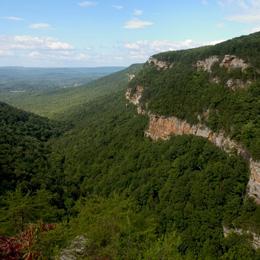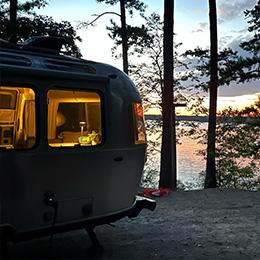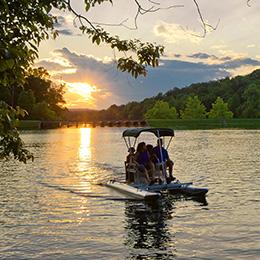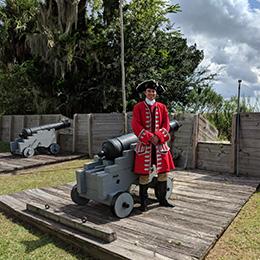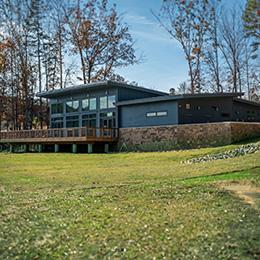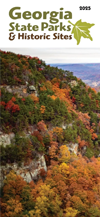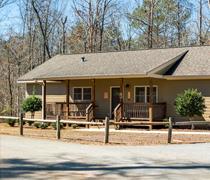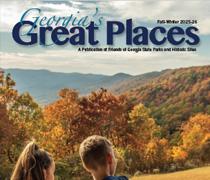President Jimmy Carter’s Influence on Georgia’s State Parks & Historic Sites, A Division of the Department of Natural Resources
39th U.S. President (1977 to 1981)
76th Georgia Governor (1971 to 1975)
Georgia State Senator (1963 to 1967)
Upon the passing of former President Jimmy Carter, we reflect on the enormous influence he made on Georgia’s State Parks and Historic Sites. Many of his important contributions continued after his presidency – his life of quiet public service extending far beyond his presidential accomplishments. Although the world knew him best as the former President of the United States, Carter was a man with humble roots in the small town of Plains, Georgia, where he returned after his presidency to live the rest of his life.
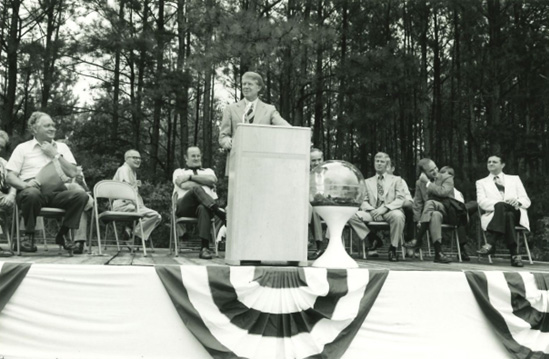
Jimmy Carter at the dedication of Panola Mountain
After taking office as Georgia’s governor in 1971, Carter reorganized all state agencies to improve efficiency and services. Consolidating 38 agencies into one, he created the Department of Natural Resources (DNR). In July of that year, he signed a bill making Providence Canyon in Lumpkin a state conservation park. Three years later, he spoke at the dedication of Panola Mountain State Conservation Area near Stockbridge, which had been purchased in part by actions of the Georgia Conservancy. Later that same year, Georgia accepted the deed to Hofwyl-Broadfield Plantation and 1,268 acres, now a state historic site near Brunswick.
The influence of the presidency never distracted him from serving. As a longtime volunteer with Habitat for Humanity, Carter stated, “Our greatest blessings come when we are able to improve the lives of others.” This is reflected in his commitment to conservation work and other environmental issues. Carter was a fierce protector of Georgia’s natural resources, and an important figure for the State Parks and Historic Sites Division. He supported the creation of the Georgia Conservancy and the Georgia Heritage Trust, two organizations that played major roles in creating protected lands.
With help from the Georgia Conservancy and Carter’s support, Sweetwater Creek State Park in Lithia Springs was authorized by the state legislature in 1972, opening to the public in 1976. According to one newspaper article, many sites originally intended for purchase for public open spaces were “no longer in existence because of construction of shopping centers, apartments, and other commercial operations.” Carter stepped in with fundraising efforts to establish this popular park near Atlanta, likely avoiding a similar fate.
The Georgia Heritage Trust Program, established under Carter by the Heritage Trust Act of 1975, identified, acquired and protected “heritage areas” in Georgia that exhibited “unique natural characteristics, special historical significance, or particular recreational values.” Examples of these properties managed by DNR include Wormsloe Historic Site, Ossabaw Island State Heritage Area, Lewis Island Natural Area and Pigeon Mountain Wildlife Management Area.

Carter’s passion for conservation is also clear throughout archival materials, as he even introduced a “Crawdad Day” to celebrate one of Georgia’s smallest creatures. In his declaration, he described the crawdad as a creature who had gone “too long unnoticed and unrecognized for its uniqueness and special abilities as an agent of the environment.” This attentiveness to even the smallest creatures reflected his greater care for his state and country. Even animals like the crawdad were not too tiny to be important for our broader ecosystem – something that Carter clearly recognized.
Even after the former president moved back to his small hometown of Plains, he protected Georgia history and recognized the value of tourism. His influence and guidance helped establish the SAM Shortline Excursion Train in Cordele – sometimes called Georgia’s “rolling state park.” Riding in vintage cars, passengers travel from Cordele to Plains, Americus, Lesli and Archery. Along the way, they can explore numerous attractions, including Carter’s campaign headquarters and boyhood farm – part of the Jimmy Carter National Historical Park. Carter even hosted the SAM Shortline’s inaugural run in October of 2002.
Former President Carter leaves a tremendous legacy of conservation and care for Georgia. His life will continue to inspire us, as the next generation rises to selfless work in natural preservation, volunteerism, and improvement of our state parks and historic sites.



